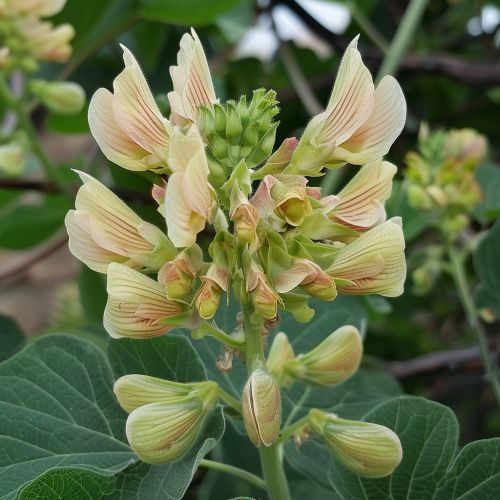Fabaceae
Introduction
The Fabaceae or Leguminosae is a large and economically important family of flowering plants, which is commonly known as the legume family, pea family, bean family, or pulse family. The group is the third-largest land plant family, with 751 genera and nearly 20,000 known species.
Taxonomy
The Fabaceae family is divided into three subfamilies: the Caesalpinioideae, the Mimosoideae, and the Faboideae. These three subfamilies have been recognized based on fruit type, floral structure, and vegetative characteristics. The Caesalpinioideae and the Mimosoideae are considered to be more "primitive" and the Faboideae more "advanced".
Morphology
Fabaceae species exhibit a wide range of growth forms, including trees, shrubs, and herbaceous plants. Members of the family generally feature compound leaves and produce their flowers in clusters. The flowers typically have five generally fused sepals and five free petals. They are often bilaterally symmetrical, with the petal known as the banner positioned on the outside of the flower, and two petals known as wings enclosing the inner two petals, which are known as keels.
Distribution and Habitat
Fabaceae species are found worldwide, from temperate to tropical regions. They inhabit a wide variety of habitats, from desert to aquatic environments. Some species are known for their ability to thrive in poor, disturbed soils.
Economic Importance
Fabaceae has a significant economic impact worldwide as crops, including such species as soybeans, common beans, chickpeas, peas, and peanuts. Many legumes are considered essential food crops due to their high protein content and ability to fix nitrogen in the soil, improving soil fertility and reducing the need for synthetic fertilizers.
Nitrogen Fixation
One of the most significant characteristics of the Fabaceae family is their ability to fix nitrogen from the atmosphere through a symbiotic relationship with bacteria known as Rhizobia. This process enriches the soil by adding nitrogen, an essential nutrient for plant growth.
Evolution and Fossil Record
The Fabaceae family is believed to have first appeared during the early Cretaceous period, approximately 100 million years ago. The earliest fossil evidence of Fabaceae is pollen from the early Cretaceous. The first true leaves and pods appeared in the late Cretaceous.
Conservation
Many species within the Fabaceae family are threatened by habitat loss and over-exploitation. Conservation efforts include habitat protection, seed banking, and cultivation in botanical gardens.
See Also


